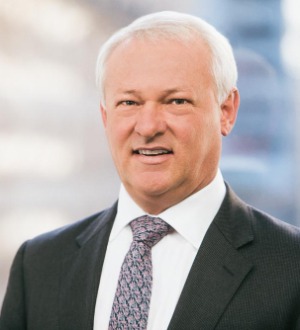ABC v NHS — Background
The UK High Court[1] applied established duty of care principles to legalise professional guidance which permits disclosure of confidential information to a proximate third party without consent, in circumstances where the medical professional has properly undertaken the requisite balancing exercise of risks and interests affecting the patient, third party and the public interest. The duty to balance interests extends to acting in accordance with the outcome of that exercise and is not limited to disclosure of genetic information. In this case, the quantum of damages was agreed but the claim failed on breach and causation, with the case ultimately dismissed.
The facts giving rise to ABC’s claim are both tragic, unusual[2] and acutely sensitive.[3] The plight of ABC has previously been charted in two earlier articles which included commentary on the successful strike out application at first instance[4] on the basis that it disclosed no reasonably arguable duty of care,[5] and subsequent appeal[6] which overturned that decision and directed the case proceed to hearing.[7] The highly anticipated decision of the High Court was handed down on 28 February 2020, less than a month after the close of proceedings.
ABC lost her mother in 2007 at the hands of her father, referred to as “XX”, who was subsequently convicted of manslaughter and detained under the Mental Health Act.[8] While detained at the second defendant’s facility, XX received care and treatment through a multi-disciplinary team, including but not limited to psychiatrists, psychologists and social workers. The following key events are critical to ABC’s claim:
- In 2009, XX’s primary care team was forensic psychiatry, headed up by Dr Olumoroti.[9]
- In March 2009 and as part of XX’s rehabilitation, ABC and her sister were invited to, and participated in, family therapy arranged by the second defendant with a view to supporting XX on his release, and to provide victim support services to them.[10]
- In or around June 2009, the psychiatry team sought wider advice specialists within the NHS Trust, including geneticists and neurologists when it became apparent that XX’s offending could have an organic and genetic cause,[11] namely Huntington’s Disease (“HD”), being an incurable neurodegenerative disorder with a hereditary recurrence of 50%.
- From June 2009 and continuing, XX refused to undergo genetic testing and aggressively maintained that any results were not to be disclosed to his daughters on the basis that they were of child bearing age.[12]
- By August 2009, the psychiatry team recognised the potential conflict of interests having regard to the hereditary risks, and they then sought specialised advice from geneticists as to management of any disclosure.[13]
- On 2 September 2009, ABC attended a multidisciplinary meeting and was asked whether she had children. She was in fact pregnant at the time but had only disclosed this to the social worker. Following the meeting, ABC disclosed the news to XX, who then shared the information with his clinical psychologist. XX was adamant that his diagnosis was not to be disclosed to his daughters on the basis that they “get upset, kill themselves or have an abortion”.[14]
- On 7 September[15] and 25 September 2019,[16] a geneticist provided written advice to Dr Olumoroti, which set out four options for disclosure based on varying levels of consent.
- On 9 November 2009, it was confirmed that XX had HD by way of genetic testing.[17]
- On or around 10 December 2019, Dr Olumoroti determined that XX’s confidentiality was not to be overridden in favour of his daughters for fears over his mental state.[18]
- In the period between disclosure of the pregnancy in September and the mandate by the responsible clinician not to disclose the diagnosis in December the same year, regular debate was had between the care team members, all with differing views. Dr Olumoroti also engaged in “constant discussions”[19] with XX regarding the impact of disclosure (or lack of).
- On 4 August 2010, the Mental Health Tribunal directed XX’s conditional discharge, which included release into the care of ABC.
- On 23 August 2010, Dr Olumoroti and a social worker attended ABC’s house in relation to XX’s pending release, at which time Dr Olumoroti breached XX’s confidentiality and disclosed the HDdiagnosis.[20] By this time, ABC’s baby was 4 months old.
- On 7 October 2010, ABC informed XX’s clinical team that her sister was pregnant. Both XX and ABC determined that the sister should not be told of the diagnosis.[21]
- ABC tested positive for HD when tested in 2013. ABC is likely to develop irreversible symptoms in 5 to 10 years.[22]
ABC’s claim
The basis of ABC’s claim, which morphed subtly over the course of the three stages of proceedings, was that the defendants ought to have given her sufficient information as to the genetic risk at a time when it was open to her to terminate the pregnancy. Having been so informed, she would have undergone genetic testing and proceeded with a termination.[23] ABC claimed that the defendants deprived her of the opportunity to make that choice[24] either by failing to follow and implement advice provided by the genetics team to enable disclosure,[25] or by failing to conduct a proper balancing exercise as to whether disclosure should have been made without consent on the basis that disclosure was the only reasonable outcome.[26]
Despite framing her claim against the three NHS Trust entities, no real allegations were pursued against the first and third defendants, being the neurological department (including geneticists) and the social worker. The High Court accepted that no criticism could reasonably be made of them.[27]
ABC categorised the duty of care owed to her as that of a patient of the (second) defendant, meaning the case fell within established principles.[28] Alternatively, the (second) defendant had assumed responsibility for her welfare both in the context of providing family therapy and her long-standing relationship with the team caring for XX in the context of his rehabilitation.[29] If neither route provided the requisite relationship, ABC claimed that established principles could be extended by way of incremental extension having regarding to the facts of her case.[30]
The defence, which was advanced jointly and without the need for apportionment, rejected ABC’s classification of the relevant duty, instead insisting it was “a novel case involving negligent omission in respect of which no duty had ever previously been recognised by the courts”.[31]
The duty determined
ABC’s involvement in XX’s rehabilitation undoubtedly created a complex situation for all involved in that she was not just his support, but also a victim to his crime.[32] To further complicate matters, there was a clear overlap between XX’s clinical care and the family therapy, which was accepted as necessary given the factual matrix.[33]
On appeal, Irwin LJ recognised that there is no simple duty of disclosure,[34] a sentiment which was repeated by the High Court in affirming that the duty sought was not a free-standing duty to disclose genetic information,[35] but rather, a duty to balance risks and interests properly.[36] In framing the duty in this way, the court intentionally narrowed the scope as set forth by the claimant[37] and the defendants.[38]
Having examined the relationship between ABC and the family therapy team, the High Court found that she was in fact their “patient”[39] giving rise to a legal duty of care, further supported by the existence of a relationship of proximity and foreseen harm to ABC.[40] The duty required the second defendant to not only balance the competing interests of ABC (in being informed of the genetic risk), her father (in preserving confidentiality of the diagnosis), and the public interest (in maintaining medical confidentiality generally),[41] but to act in accordance with its outcome.[42]
The High Court declined to extend the doctor–patient relationship to Dr Olumoroti on the basis that he did not participate in the delivery of family therapy,[43] rather he was squarely XX’s responsible clinician. Further, ABC was never a patient of the geneticists and hence no duty could arise.[44]
On appeal, the defence advanced nine policy reasons why a duty should not be imposed,[45] however pressed five in closing to maintain that doing so would not be fair, just and reasonable.[46] In short, the High Court:
- agreed with Irwin LJ that practitioners are regularly confronted with decisions which leave them liable to be sued. However, this is tempered by considerable judicial latitude when questions of conflicting obligations arise;[47]
- disagreed that consideration of relevant third-party interests would negatively impact on the duty of confidence in that the duty is not absolute, as is reinforced by professional guidance;[48]
- considered that the present case is not one in which the third party didn’t want to receive the information and therefore is irrelevant;[49]
- acknowledged that any duty which distracts attention from the primary care of the patient is undesirable but considered that the unusual factual matrix of this case, combined with the proximate relationship between the relevant parties, would not enliven the “floodgates” concern.[50] Further, Yip J disagreed with the distinction suggested by Irwin LJ between genetic and other medical information on the basis that the evidence does not support “why genetic information should be treated differently from other information which reveals a significant risk to another person”;[51]
- rejected the contention that there is no need to legalise an existing professional obligation. If anything, there is greater force in the contrary and this represents only a modest incremental step in the development of the common law.[52]
To disclose or not disclose
The High Court recognised that it “is very well-established, and not in dispute, that medical professionals generally owe a duty to maintain confidence in information about a patient’s health and treatment.”[53] It is equally accepted that this duty is not absolute.[54] Professional guidance is alive to this fact, and the common law has recognised areas in which disclosure without consent has been seen to be in the public interest.[55]
The court went into a detailed review of the relevant professional guidance published by the General Medical Council which recognise disclosure of confidential information (including genetic information) in the absence of consent is warranted in certain circumstances, despite historical and textual differences in how the balancing exercise was to be approached.[56] Further, the court recognised that genetics[57] and psychiatry[58] are areas in which specific guidance has been given on the basis that those fields are often privy to information of a sufficiently serious nature that may affect others. In charting the relevant guidelines, it is clear that there was professional precedent for disclosure in the circumstances of the present case.[59]
Ultimately, the High Court found that an actionable breach had not been established. There was no clear consensus as to what the outcome of the balancing exercise should have been,[60] therefore it could not be said that the decision not to disclose was one which no reasonable forensic psychiatrist could have made,[61] with the assistance of the multi-disciplinary team and the support of the genetics service.[62] The outcome of the balancing exercise arrived at by Dr Olumoroti merely placed less weight on reproductive autonomy and more weight on the potential damage to XX,[63] which was an outcome supported by a responsible body of medical opinion.[64]
This conclusion was supported by the extensive expert opinion advanced by the parties, which necessarily conceded the factual complexity of the case, the likes of which had not been replicated in their clinical experience.[65] Notably, the expert geneticists agreed that if ABC had been their patient, they would have “found a way” to indirectly disclose the diagnosis of HD to her.[66] The court accepted that this was a difficult scenario and not one in which a legitimate practical example could be proffered by the clinicians, both treating and expert.[67] The finding as to an appropriate balancing act is somewhat surprising considering the court also accepted that there was “inadequate or absent evidence of a proper balancing exercise having been undertaken” by Dr Olumoroti in the treating records.[68]
Causation
In a case such as this, the timing of information was critical as ABC only had a very narrow window in which to test and terminate, should she choose to do so upon knowledge of genetic risk. The court found that the latest date on which she could have terminated was 6 December 2009, being 24 weeks gestation.[69] Realistically, the decision to inform ABC of the suspected risk could not have been made before early October,[70] and the diagnosis was only confirmed in early November (when she was 20 weeks pregnant). ABC’s evidence was that she would have tested “without hesitation” and undergone termination in the event that she received a positive diagnosis.[71]
There was some muted criticism of Dr Olumoroti by the court on the basis that he showed no expediency in reviewing the genetic advice, nor arranging the genetic testing to be completed or reported.[72] The practical effect of the lack of urgency meant that it was too late for ABC to attend to the necessary counselling and testing in time to terminate. Critically, the court found that despite any reasonable criticism of the second defendant in relation to his decision-making process and record keeping, the evidence did not establish that this affected the outcome.[73]
The court disagreed, on the balance of probabilities, that ABC would have proceeded as claimed[74] and therefore the claim failed not only on breach, but also causation. In reaching this conclusion, the court considered the viable options available to her at the relevant time (being November 2009),[75] her own decision to withhold the same information from her pregnant sister at a time when the sister would have been able to abort,[76] and her decision to be formally tested only on commencing the subject legal action.[77]
Comment
The recognition of a duty on the facts of this case represents a substantial development in traditional legal formulations of the duty of care. It is however judicially constrained by the need for a relationship of proximity and reasonable foreseeability of harm. Further, the existence of a professional duty to balance risks and interests is not new or novel.
There are sound legal and policy grounds for providing clinicians with considerable latitude when faced with a difficult decision where the competing rights of two individuals are concerned.[78] One questions whether this in itself will negate the practical effect of extending the legal duty of care to cover a factual scenario such as this, or whether the restraints as to proximity and foreseeability provide adequate protection from any noticeable extension of the doctrine.
This case demonstrates the issues with differing assessments or classifications of “risk” and “harm”. The advising geneticist had regard to the fact that HD is incurable and hence disclosure would not lead to any “therapeutic benefit”, nor did they think that the scenario presented a risk of “serious harm” to enliven the professional guidelines.[79] Differently, a treating psychiatrist viewed the diagnosis as of “vital interest” to ABC on the basis that time was of the essence and the diagnosis may have itself contributed to XX’s violence against the mother.[80]
Medical practitioners are not protected from subconscious influence and the factual matrix of this case gives rise to issues of public policy and/or public opinion whereby societal notions of culture, religion, race, age, gender, orientation or other influencing nuances may be at play in clinical decision making, rather than the particular circumstances and priorities of the affected persons. In this instance, personal autonomy (including reproductive autonomy) in relation to medical risks,[81] as recognised by the common law and the European Human Rights Convention[82] were given less weight despite the complex factual scenario in which the situation and diagnosis arose, including the fact that the father’s mental capacity had been called into question.
Takeaways for medical and legal practitioners
It remains the case that any medical practitioner faced with the dilemma of competing interests should be prudent in their consideration of the relevant risks and interests, seeking consultation where appropriate, and documenting their decision (including the process taken to arrive at the same). With complexity often comes the risk of legal action giving rise to retrospective interrogation of the decision as against the Bolam and Bolitho principles, which have been codified to differing extents in Australian statute.[83]
Medical practitioners are encouraged to seek advice from their medical indemnity organisation, or notify them of any clinical event that has the potential to be called into question. Legal practitioners prosecuting or defending a clinical decision with respect to disclosing confidential information should heed the commentary regarding a reasonable difference in opinion and ensure the documentation of any decision-making process supports their claim as to whether it was in/appropriate.
The final chapter has closed for ABC. Has a new chapter begun in the long history that is the common law duty of care, or just a new paragraph on the same page?
This article was originally published by Australian Health Law Bulletin. This article was written by Principal Andrew Saxton and Solicitor Lauren Biviano. Please contact them if you have any questions or would like more information.
Disclaimer: This information is current as of September 2020. This article does not constitute legal advice and does not give rise to any solicitor/client relationship between Meridian Lawyers and the reader. Professional legal advice should be sought before acting or relying upon the content of this article.
- ABC v St George’s Healthcare NHS Trust [2020] EWHC 455 (QB), Justice Yip presiding.
- Above n 1, at [6].
- Above n 1, at [4].
- ABC v St George’s Health Care NHS Trust [2015] EWHC 1394 (QB) (“Dismissal”).
- See earlier article for full discussion: J Hayes and A Saxton “ABC v St George’s Health Care NHS Trust: disclosure of genetic information to a patient’s genetic relatives absent consent” (2015) 23(8) Australian Health Law Bulletin 152.
- ABC v St George’s Heathcare NHS Trust [2017] EWCA Civ 336. Lord Justice Irwin writing the judgment, with Underhill and Gloster LJJ concurring (“Appeal”).
- See earlier article for full discussion: A Saxton and J Hayes “Disclosure of confidential genetic information to relatives: the complexities and difficulties revisited — appeal from the interlocutory decision of ABC v St George’s Health Care NHS Trust” (2017) 25(6) Australian Health Law Bulletin 118.
- 1983 (UK), ss 37, 41.
- Above n 1, at [6], [88].
- Above n 1, at [173].
- Above n 1, at [7]–[8].
- Above n 1, at [8].
- Above n 1, at [11], [14].
- Above n 1, at [77].
- Above n 1, at [78].
- Above n 1, at [79]–[80].
- Above n 1, at [15]–[16]: XX’s results were reported on by the laboratory on 9 November 2009, and disclosed to him in person on 10 December 2009.
- Above n 1, at [99].
- Above n 1, at [219].
- Above n 1, at [19].
- Above n 1, at [20].
- Above n 1, at [21].
- Above n 1, at [23].
- Above n 1, at [21].
- Above n 1, at [204] — a view supported by the claimants genetic experts, above n 1, at [131].
- Above n 1, at [204].
- Above n 1, at [172]; ]198]–[199].
- Above n 1, at [26], [30].
- Above n 1, at [27], [30].
- Above n 1, at [30], being a reference to principles elucidated in Caparo Industries plc v Dickman [1990] 2 AC 605; (1990) 1 ACSR 636; [1990] 1 All ER 568; [1990] 2 WLR 358 and Robinson v Chief Constable of West Yorkshire Police [2018] All ER (D) 47 (Feb); [2018] UKSC 4; [2018] 2 All ER 1041; [2018] 2 WLR 595.
- Above n 1, at [31]–[33].
- Above n 1, at [55], [58].
- Above n 1, at [60].
- Above n 1, at [164], citing the Appeal, above n 6, at [23].
- Above n 1, at [164].
- Above n 1, at [178].
- Above n 1, at [147].
- Above n 1, at [162].
- Above n 1, at [66], or a “participant” in family therapy, the distinction being immaterial to the question of whether a duty ought to apply in the circumstances of this case.
- Above n 1, at [174]–[175].
- Above n 1, at [188], applying the Bolam test — typical rule for assessing the standard of care provided by a medical practitioner, which asks whether he/she has breached the legal duty of care by reference to peer opinion. Effectively establishes that the standard of care is a matter of medical judgment; Bolam vFriern Barnet Hospital Management Committee (1957) 1 BMLR 1; [1957] 2 All ER 118; [1957] 1 WLR 582. Modified by the Bolitho principle, see below n 61.
- Above n 1, at [189].
- Above n 1, at [67].
- Above n 1, at [81].
- See discussion in “Disclosure of confidential genetic information to relatives: the complexities and difficulties revisited — appeal from the interlocutory decision of ABC v St George’s Health Care NHS Trust”, above n 9.
- Above n 1, at [177]–[188].
- Above n 1, at [178].
- Above n 1, at [179].
- Above n 1, at [180].
- Above n 1, at [181].
- Above n 1, at [184].
- Above n 1, at [186].
- Above n 1, at [36].
- Above n 1, at [38].
- Including wrongful birth claims involving failed vasectomies, above n 1, at [169].
- Above n 1, at [39]–[42].
- Above n 1, at [43].
- Above n 1, at [44].
- Generally, disclosure without consent is warranted if the information disclosed a “serious risk” to the patient or person, including exposure to “risk of death of serious harm”, above n 1, at [41]. In relation to genetics, disclosure may be warranted when “the benefit to those at risk is so considerable as to outweigh any distress which disclosure would cause the patient”, above n 1, at [43]. In respect of psychiatry, “the doctor must be certain that the disclosure is in the public interest”, above n 1, at [44].
- Above n 1, at [223].
- Applying the principles elucidated in Bolitho — follows and extends the Bolam test by requiring evidence that the professional standard contended for is logical, to the satisfaction of the court (rather than substantiated by expert medical opinion alone): Bolitho v City & Hackney Health Authority [1998] AC 232; [1997] 4 All ER 771; [1997] 3 WLR 1151.
- Above n 1, at [221].
- Above n 1, at [228].
- Above n 1, at [231].
- Above n 1, at [50].
- Above n 1, at [128], [210].
- Above n 1, at [129]–[130], [213].
- Above n 1, at [217].
- Above n 1, at [234].
- Above n 1, at [236].
- Above n 1, at [235].
- Above n 1, at [216].
- Above n 1, at [220].
- Above n 1, at [252].
- Above n 1, at [241].
- Above n 1, at [245], [248].
- Above n 1, at [243].
- Above n 1, at [193].
- Above n 1, at [82].
- Above n 1, at [114].
- Above n 1, at [187].
- Article 8, above n 1, at [187]. While pleaded, the court took the view that the Human Rights aspect of ABC’s claim added no further persuasive element, concluding that the rights ran parallel to the professional guidance and development of the common law.
- For example, s 5O of the Civil Liability Act 2002 (NSW).
















